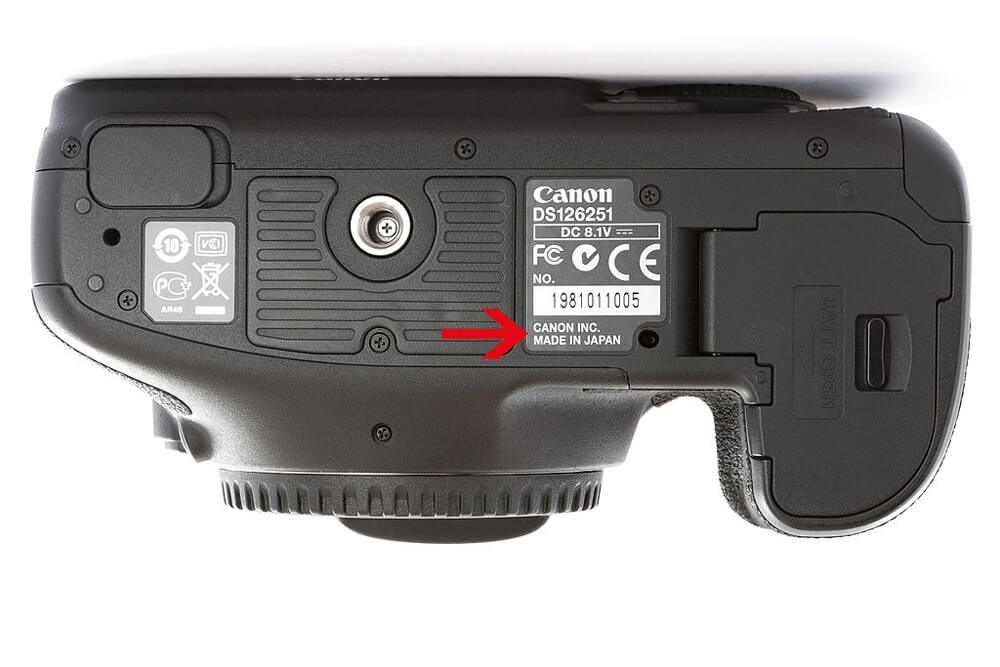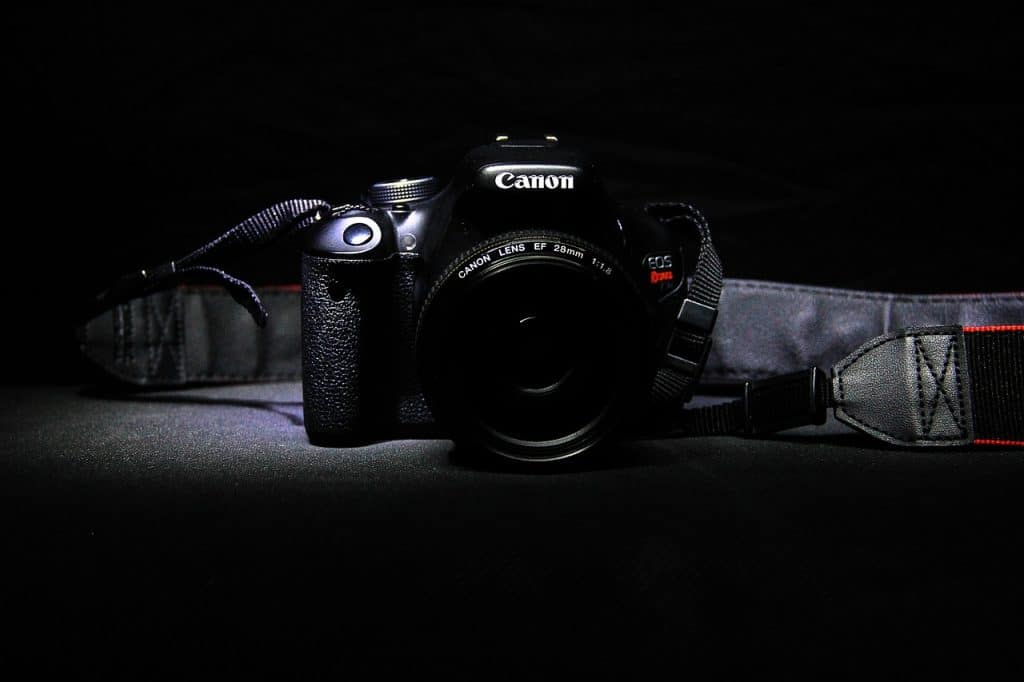Often, I’ve wondered where Canon cameras are manufactured. Amateur and professional photographers have asked me this too. To answer, let’s look closely at how Canon cameras are made.
Canon has several production sites around the world. Most of their cameras come from their main plant in Utsunomiya, Japan. This plant produces 80% of their cameras. Other sites are based in Taiwan (Taipei), Malaysia (Penang), Thailand (Bangkok), and China (Shanghai). They produce components near East Asia and assemble the cameras in these 4 sites. This allows them to give customers different models that fit their needs better by providing different specs.
Canon also makes other imaging products like camcorders and digital copiers. Their most popular products are DSLR cameras, which are mostly made in Japan. Some features come from regional manufacturing economies in East Asia.
Table of Contents
Canon’s Manufacturing Locations
I’m a keen photographer and had to know where Canon make their cameras. Canon are famous for their quality and price. So I’m exploring Canon’s factories around the world in this article. Where do they make their cameras? Let’s find out!
Japan
When it comes to cameras, the name Canon is always top of the list. Canon is based in Tokyo, Japan and has factories all over the world. But Japan is home to its biggest production plants.
Nagasaki, Itami, Oita, and Utsunomiya are all cities hosting Canon’s production plants. These plants have automated facilities that follow strict quality control from raw material inspection to finished product acceptance.
At Canon’s Tokyo headquarters there’s a research and development center. Here, experts work day and night on new tech and concepts for future cameras. They undergo tests for accuracy and precision, and find ways to save energy and be good to the environment.
That’s why Canon is the most reliable brand for professional photography gear – DSLRs and full frame cameras.

Philippines
The Philippines plays a major role in the production of Canon cameras. It is the only manufacturing facility for Canon digital cameras and lenses. The two main locations are Baguio and Nasugbu, on Luzon island.
The product lineup includes EOS DSLR cameras and lenses, PowerShot G series and EOS M series, and other exclusive items. The facilities use advanced precision technologies to make products meeting the highest quality standards. This accounts for around 30% of Canon Inc.’s camera product shipments worldwide.
Industry experts use their nurtured skills and refined techniques to produce world-class products that keep evolving. This has been happening since 1987 when EOS Kiss was born.
Taiwan
Canon saw the potential in Taiwan while it was in its beginnings. So, they invested a lot. And it paid off! Now, Canon has 4,000 employees in its factories. They create camera components there, which are shipped worldwide.
Canon also has two factories for television lenses, and a lab for spacecraft design. All the time, something new is coming out of Canon’s Taiwanese factories. Sensors, lenses, and medical imaging products – if you have a tech item, it probably started its life in Taiwan!
China
People often ask me, as a photographer, where Canon cameras are made. Canon is one of the best when it comes to camera manufacturing. They have production facilities all over the world, including China.
Canon has five production plants in China. They are in Hangzhou Zhejiang, Suzhou Jiangsu, Wuxi Jiangsu, Qingyuan Guangdong, and Tianjin. These factories make lenses, digital cameras, and other photographic products.
The Chinese plants do more than just produce items in China. They help with product development in Japan and other countries in Europe. According to Canon’s financial reports for 2019-2020, the factories made 6 million interchangeable lenses and 12 million digital cameras that year.
Chinese factories play an important role in Canon’s success as a global photography leader. High-quality lenses and cameras come from the Chinese production facilities.
Canon’s Manufacturing Process
Have you ever pondered where Canon cameras are made? Wonder no more! Canon has factories globally, from Japan to the USA, and from China to Brazil.
Let’s explore Canon’s manufacturing process and how it influences the quality of their cameras.
Quality Control
At Canon, quality is part of every production step. Quality control specialists inspect raw materials as they arrive at the factory. They make sure only high-quality parts are used. Every part is checked to meet Canon’s strict standards.
Environmental tests are included in these inspections. The tests simulate outdoor settings, like extreme temperatures and humidity levels. The tests make sure the products can perform well in many conditions.
The product is inspected by experts from different departments before it leaves the factory. They check for any flaws or defects. This makes sure each camera is perfect before it ships to customers.
Automation
Canon cameras have always amazed me with the level of automation involved in their creation. As a photographer, I understand the importance of precision for customer satisfaction. Quality is the first thought that comes to my mind when Canon cameras are mentioned.
At Canon’s factories, advanced technology is used to uphold high standards for camera body production. Special machinery is used to cut and shape pieces for each part. Then, these parts move along an automated assembly line. The Automated Optical Inspection checks for accuracy and surface defects before packaging.
Robots also play a key role in production. Industrial robots take charge of welding, operating tools like lathes and drills, creating detailed parts for each camera body. These robots reduce human labor, while allowing more precision in the production process.
A quality control department makes sure that no cameras leave the factory with faulty components. This guarantees maximum customer satisfaction every time!
Customization
Canon have always strived to innovate and provide cameras tailored to their consumers’ needs. From rangefinders to DSLRs, their dedication to pushing the limits has led to powerful yet versatile cameras. They take a unique approach, opting for customization over mass-production.
They set up small production lines with all necessary machines. Experienced engineers use advanced equipment and software tools to create specialized production lines. This allows accurate inspection of each camera before releasing it. They source parts precisely, taking only what they need.
Engineers also influence design by suggesting improvements and adapting processes. Innovative changes help promote growth and development, creating finely-tuned products suited for their clients. Without any significant impact on pricing or lead time.

Benefits of Manufacturing Cameras with Canon
I’m a pro photographer and I trust Canon more than any other camera brand. That’s why I’ve used their cameras for many years. In this blog, I’ll explain why Canon is such a great manufacturer.
Canon’s cameras are famous for their efficiency, quality, and toughness. It’s no shock that Canon is a top choice for many photographers. Let’s explore the great perks of having a Canon camera!
Cost-effectiveness
Canon offers cost-effectiveness in its camera manufacturing. It’s one of the leading brands in photography and has hundreds of dedicated factories all over the world. This helps them keep costs low by having components made in countries with lower wages and production costs. Their products are then cost-effective for customers.
The company also has a vast global network. This gives them access to workers and resources to support product development faster and more efficiently. Projects get done quickly, meeting customer needs quickly and cheaply. Research shows this leads to 28% cost reduction compared to competitors for Canon cameras.
Canon adds even more value with maintenance services. This saves customers money in the long run. Regular maintenance checks spot faults early, so they don’t grow into more costly ones. This enhances Canon’s reputation of providing reliable services at affordable prices for a long time – making it a great investment.
Quality Assurance
Manufacturers are certain of quality when using Canon cameras. Canon is a leader in camera production, making top-notch products for buyers. Canon’s commitment means cameras are built for top performance, with the latest software and hardware.
Canon tests every part for performance and compatibility. Parts must pass strict quality checks, inspections to match industry standards. Furthermore, parts must pass tolerance and accuracy tests when assembled. This ensures great customer satisfaction.
Canon certifies all components are safe according to international safety standards. This gives manufacturers reassurance their products will be reliable and perform great. Canon gives manufacturers confidence that they’re getting a high-quality product.
Environmentally-friendly
As a photographer, I’m aware of the impact my activities have on the environment. Canon takes great steps to make its products with minimal environmental pollution. They use recyclable materials and digital technology, like digital micro-manufacturing, to cut down energy usage.
For instance, Canon’s Digital Wireless Transfer Technology sends images from a camera to a printer or computer wirelessly. This helps professional photographers quickly share their work, without needing to send files on discs or hard drives.
I’m happy Canon is doing its part for the environment. They continue to invest in green technologies for their cameras and other photographic equipment.
Conclusion
Canon cameras are mainly made in Japan. But some come from Thailand and Taiwan. It depends on what tech and expertise each place has. Canon puts factories in countries that need their cameras. Plus, subcontractors help with the making process. Because of this, Canon’s products can be found anywhere.
Before buying, make sure you know what models are available for your area. When you have decided on your budget and what you need from a camera, you can choose one of Canon’s models.
